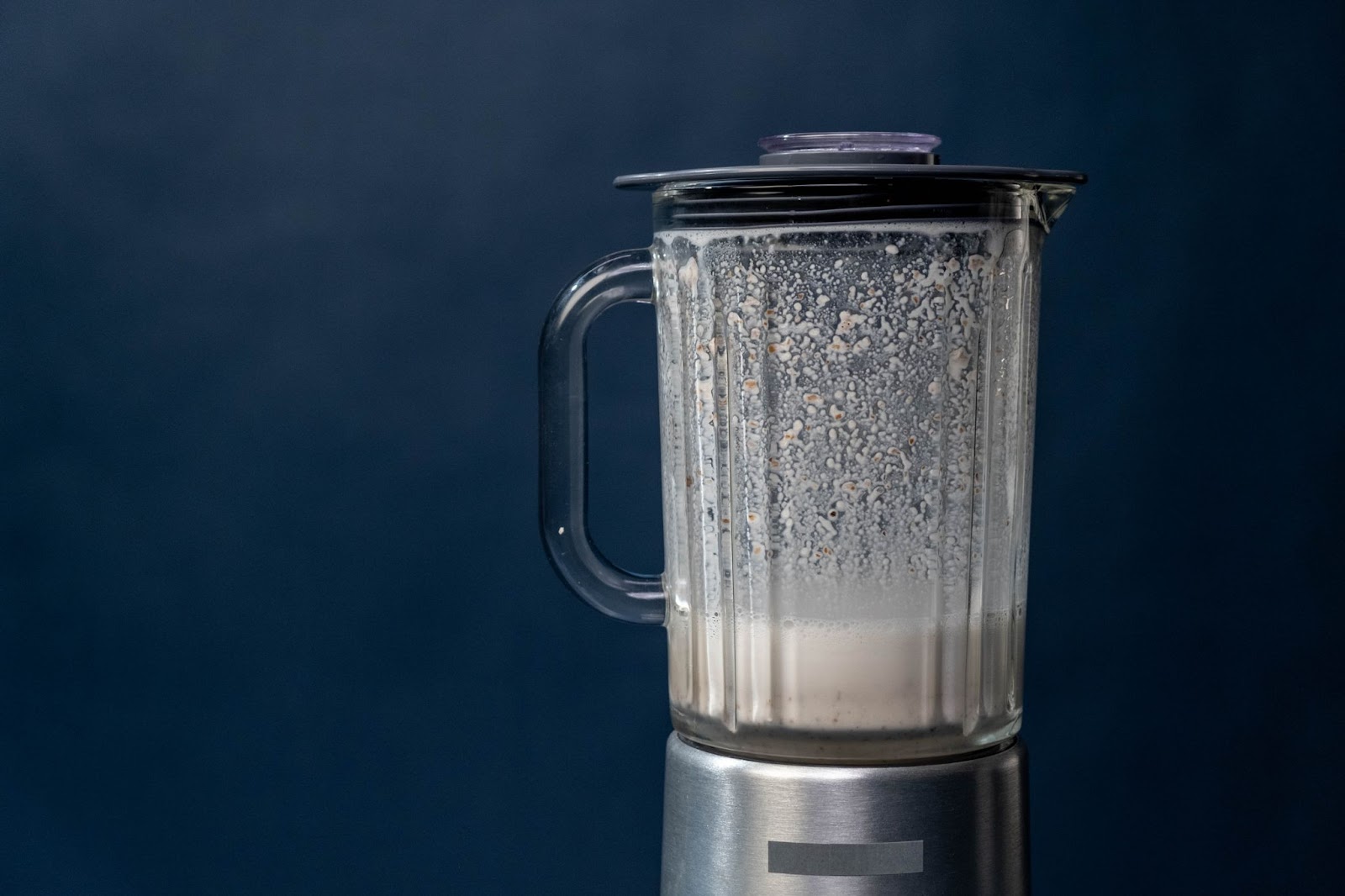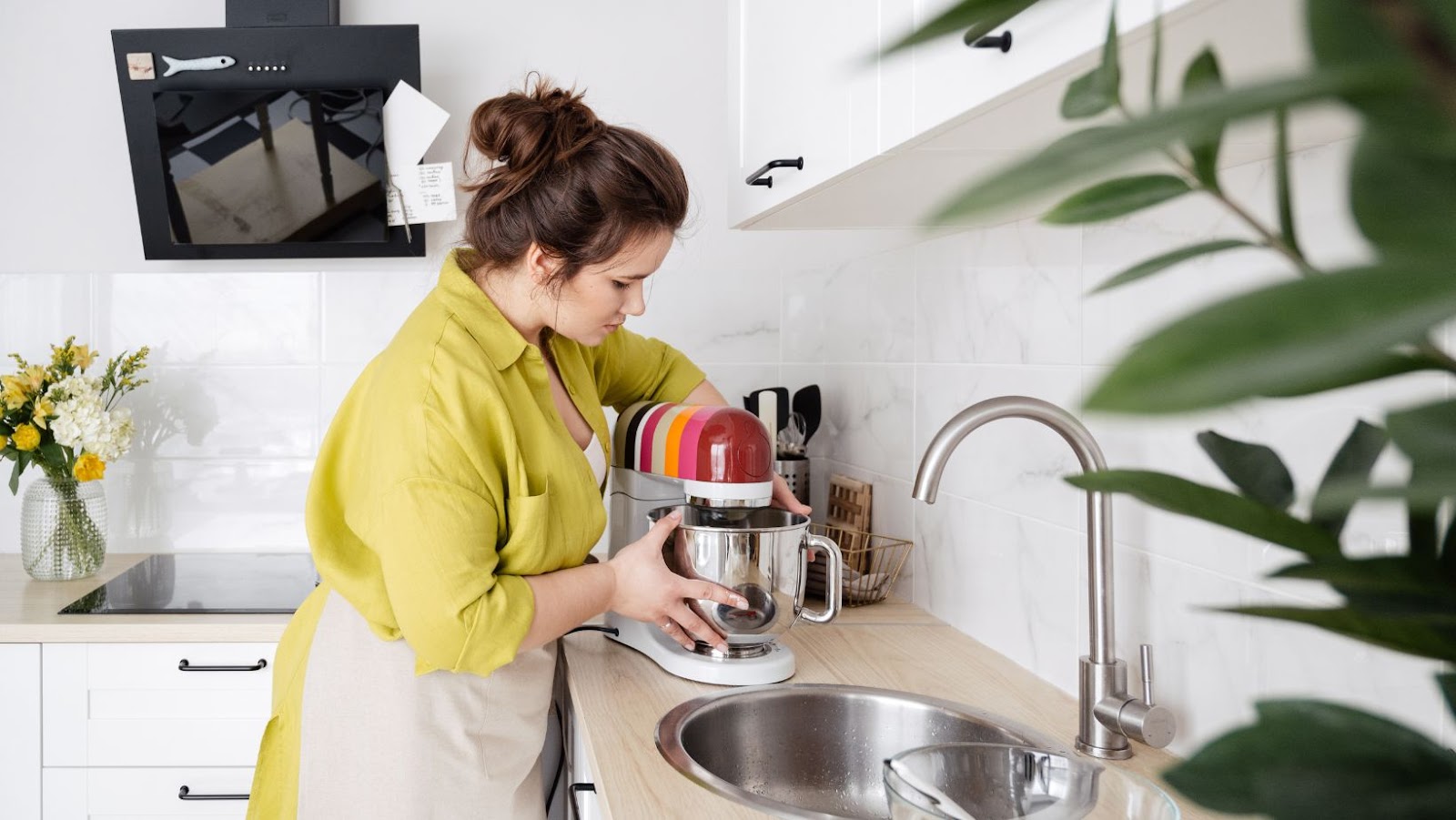
The Top 5 Things To Look For In A Food Processor
Finding the perfect food processor can be a challenging task, especially when it comes to size. However, there are specific things you need to look for in a food processor to make sure it meets your needs.
One of these crucial factors is the capacity of the bowl. The bowl size determines how much food you can process at once, making it necessary to consider how many people will be using the machine and their serving sizes. Here’s a table that can help you choose the right bowl size for your household:
| Number of People | Bowl Capacity |
| 1-2 | 3-4 cups |
| 3-4 | 5-6 cups |
| 5 or more | 7 or more cups |
Apart from bowl capacity, another factor that should guide your choice is motor speed and power. Having a powerful motor with higher speed options gives you more control over the processing time and consistency of ingredients.
Choosing between various attachments is another thing to consider when looking for a food processor. Attachments such as shredding discs or slicing blades expand the functionality of the appliance and increase its versatility.
To get optimal results with your food processor, use sharp blades and ensure that all components are adequately secured before use.
Size really does matter when it comes to food processors – too small and you’ll be left hangry, too big and you’ll have a kitchen that feels like a commercial restaurant.
Capacity: How Much Food Do You Need to Process?
To ensure you choose the right size food processor for your needs, this section on Capacity will help you make an informed decision. The two sub-sections, Bowl Size and Feed Tube, will help you understand the importance of choosing the right capacity for your specific ingredients.
Bowl Size: Choosing the Right Capacity for Your Needs
Ensuring you have the appropriate processing capacity is crucial for efficient food preparation. The amount of food one needs to process determines one’s bowl size, which in turn affects other factors such as time, energy, and kitchen space.
Below is a table displaying different bowl sizes and their corresponding capacities. This information allows you to pick the right bowl size that matches your needs.
| Bowl Size | Capacity |
| Small | 1.5-3 cups |
| Medium | 4-7 cups |
| Large | 8-14 cups |
It’s important to keep in mind that food processors are designed with specific functions. A small capacity processor ensures accurate chopping and blending for small quantities while large capacity ones are suited for bigger portions such as dough and shredding cheese.
When selecting a bowl size consider how many people you cook for, how much leftover ingredients you tend to have, and how often you plan on using it. These specifics aid in determining what bowl size would best fit your needs.
To avoid overfilling or spillage when processing, follow these suggestions. For liquids or wettable mixtures like sauces or dressings, process in batches half the size of the bowl’s capacity doubling up into two batches if need be. For dry ingredients like flour or nuts process in smaller amounts than half the full capacity to avoid overburdening the blade.
If your feed tube can fit a watermelon, you’re either going to make a giant smoothie or really impress your guests at the next BBQ.

Feed Tube: Is It Large Enough for Your Ingredients?
The feeding mechanism of a food processor determines how much food can be processed at a time. Is the opening for ingredients large enough for your needs? Let’s find out.
| Foods | Feed Tube Size (inches) |
| Cucumbers | 2.5-3 |
| Carrots | 2.5-3 |
| Potatoes | 2.5-3 |
| Zucchini/Squash | 2-2.5 |
Aside from size, factor in the shape of the feed tube to ensure that it suits your preferred chopping method. Generally, vertical chutes require less prep time because they have wider openings than horizontal ones.
Ensure that your ingredients are cut down to manageable sizes before inserting them into the feed tube so that they process efficiently. Investing in accessories or blades might seem daunting but utilizing them can ultimately save you both time and effort.
A friend who was an avid home cook struggled with making hummus until she invested in a smaller-chambered processing unit equipped with a specialized blade for grinding chickpeas. With this model, she achieved silky-smooth hummus without any tedious manual labor involved!
Get a food processor with enough power to crush your enemies…I mean, ice.
Power: How Strong Should Your Food Processor Be?
To ensure your food processor can handle the ingredients you need to process and perform efficiently, you need to choose it carefully. In order to determine your food processor’s power, explore our section on “Power: How Strong Should Your Food Processor Be?”, with sub-sections including “Motor Wattage: Matching Power to the Type of Food You Process”.
Motor Wattage: Matching Power to the Type of Food You Process
When it comes to food processors, the motor wattage plays a crucial role in determining the strength and efficiency of the appliance. Different types of food require different levels of processing power. Therefore, it is important to match the motor wattage with the type of food to be processed.
Power Ratings for Different Types of Food
| Type of Food | Motor Wattage Required |
| Soft Fruits | 400-500 Watts |
| Hard Vegetables | 700-800 Watts |
| Meat and Nuts | 1000-1200 Watts |
Soft fruits like berries and bananas require a lower amount of power as compared to hard vegetables like carrots and potatoes. Similarly, meat and nuts require even more power than hard vegetables. Having the appropriate motor wattage can streamline your processing experience and save time in preparing your dishes.
It is also important to note that high-power food processors tend to be noisier due to their faster processing speeds. On the other hand, lower-power models operate at slower speeds but generate less noise.
Did you know that the first electric food processor was invented by Pierre Verdon in France in 1960? His invention revolutionized kitchen appliances and paved the way for modern-day food processors we use today.
Why limit your food processor to just chopping when it’s basically a magician trapped in a kitchen appliance?
Versatility: What Can Your Food Processor Do?
To ensure that your food processor is versatile enough to handle all your culinary needs, look no further than the section on Versatility: What Can Your Food Processor Do? with Attachments: Checking What Comes with the Food Processor, Compatibility: Ensuring That the Attachments Fit Properly as a solution. These sub-sections will help you determine which attachments are included and how well they fit, allowing you to get the most out of your food processor.

Attachments: Checking What Comes With the Food Processor
When exploring the functionality of your food processor, it is imperative to assess the accessories that come with it. By checking the package contents, you can identify whether or not these attachments are suitable for your cooking needs.
- Assess if your food processor comes with a dough blade for kneading bread and pastry or different slicing and grating discs to aid food preparation.
- Check if there is a citrus juicer attachment included to enable easy extraction of fruits.
- Ensure that a whisk or egg beater came with the package to facilitate easier mixing of batter and other preparations requiring whipping.
- Verify whether an emulsifying disk was provided for making smoothies and creams without chunks.
- If interested in meat preparation, check if your package includes an additional stainless-steel blade to assist in grinding.
Aside from these basic attachments, some food processors could include more complex accessories like chopper blades that can replace traditional knives. Therefore, it’s recommended always taking time to carefully go through the accessory list and user manual.
Once I gifted my colleague a food processor containing all accessories required for his needs from rasping Parmesan cheese to slicing carrots and grinding hazelnuts. It aided him by reducing his work time by one-third when preparing meals for his family.
Making sure your food processor attachments fit properly is like trying to assemble Ikea furniture without the instructions.
Compatibility: Ensuring That the Attachments Fit Properly
If you want your food processor to work well, it’s essential that the attachments fit properly. Incorrectly fitted attachments can cause damage or affect performance.
- Before attaching any accessory, make sure the food processor is unplugged and switched off.
- Only use attachments that are compatible with your specific model of food processor.
- Carefully twist the attachment onto the drive shaft until it clicks securely in place.
It’s important to note that not all attachments are compatible across brands and models. If an attachment doesn’t fit easily onto a drive shaft or appears too loose/too tight, don’t force it. Instead, consult your food processor’s manual for clarification.
When selecting attachments for your food processor, consider their compatibility with other appliances in your kitchen as well. Expanding your collection of accessories can help you create even more varied and exciting dishes.
Your food processor should be so user-friendly, even your cat could use it…if your cat had opposable thumbs, that is.
Ease of Use: How User-Friendly Should Your Food Processor Be?
To make sure your kitchen tasks are easy to manage, you need a food processor that’s simple to operate and maintain. If you’re wondering how user-friendly your food processor should be, the section on “Ease of Use” with “Controls” and “Cleaning” as sub-sections is the perfect solution. We’ll cover how an intuitive button layout and easy-to-clean design can make your food prep a breeze.
Controls: Simplifying Operation With Intuitive Buttons and Functions
Effortlessly controlling your food processor is crucial for utilization. Constructing streamlined interfaces, Food processor brands are making intuitive and user-friendly controls, such as touchscreens, button combinations, and interactive screens with inbuilt recipes.
These controls simplify the operation of a food processor that allows users to chop vegetables or fruits one day and knead dough the next; it feels seamless, friendly, and familiar.
In addition to this, most modern processors have an automatic shut-off feature in case the machine overheats due to prolonged use. These features enhance safety during usage while helping to prolong a machine’s life cycle.
Pro Tip: Before using your new food processor model, take some time to explore these innovative control systems’ benefits by consulting the manufacturers’ manuals.
Cleaning your food processor shouldn’t feel like you’re scrubbing off a year’s worth of regret – make it easy to maintain.

Cleaning: Ensuring That Your Food Processor Is Easy to Clean and Maintain
To keep your food processor in top condition, it is vital to ensure it remains clean and well-maintained. This involves more than just wiping it down after each use. Diligent cleaning tasks can be challenging. However, with a few simple steps, you can quickly achieve this without any hassle.
- First things first! Unplug the device from the socket before you start cleaning it.
- Disassemble the components of the food processor carefully according to the manufacturer’s instructions and separate them completely (blades, disks, etc.).
- Fill a sink or bowl with soapy water and immerse all removable pieces of your food processor except the motor housing into that water.
- Use a soft brush or scrubber to wash away all remnants of food particles from these parts until they are thoroughly clean.
- Dry each piece thoroughly with a dishcloth before re-assembling.
Once cleaned up, store all components separately in an organized manner.
It is essential also to give your food processor periodic inspections for wear and tear as well as maintaining sharp blades.
To keep your Food Processor operational for years to come requires adept cleaning practices. Make this routine schedule part of every user manual.
With repeated usage of any electrical appliance maintaining precautions understandable and necessary.
Once I had to throw my old food processor due to its rusty blades. It was then that I realized how essential proper upkeep is for any kitchen gadgetry.





